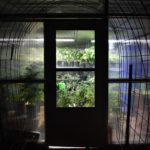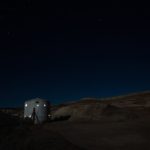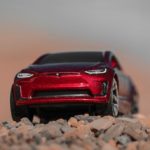Hello CapCom!
Here is my report of the day.
Best,
Journalist report, 03/05/18: The beginning of the end
While we were enjoying our evening off, a surprise guest made its appearance in the Hab: a small mouse showed up from under a couch, certainly looking for some food. It has yet certainly been scared by Louis and me, still awake later than our teammates. However, it succeeded in its quest: Gabriel was surprised to catch it eating a piece a chocolate bar he had left near its bed! He has been quick to act, and drove out our little friend, which has not been seen since.
It was even harder to wake up early today after our day off: fatigue is accumulating among the crew. Benoît has notably been unable to get out of bed for our sport session: he got up only when he felt the nice smell of pancakes. Our EVA of the day aimed to improve and test some of our experiments, the main one being the localization experiment of Benoît, which he has been working on in the Hab for a while. To model benchmarks, he had brought some balloons he had inflated with helium gas. Wearing such multicolored balloons, he looked like an astronaut who enjoyed some rides at the fair. Along with Louis, Gabriel and Jérémy, leader of the day, they then left the station.
As it has become a routine, the team started the EVA going to Pooh’s Corner, our instruments’ location. However, as both of the LOAC’s and MegaARES’ batteries had to be changed, it was decided to bring back the LOAC in the station until the next day, as we only have one spare battery. Unlike what we are used to, the team did not go on
exploration today, as they had a lot to do with the experiments. Unfortunately, Benoît’s one could not work because of GPS issues, which he will have to tackle later. In the meantime in the Hab, I started to work on our rotation video: I found the music, created a synopsis, and tried to begin to edit the video: there is yet a lot to do before it is finally completed!
Our afternoons are getting more rhythmic, as the end of the mission is in sight! However, as everyone wants to fulfill his own tasks which can evolve several members of the crew, it is sometimes hard to manage our time! Each member is indeed very busy: Gabriel managed once more our KTNE session; Louis put together a VR video of the Hab; Benoît made new solar observations, etc. There are now only 4 mission days left before our return to Earth, and one of them will be quite different than what we are used to. We will in fact receive two journalists from TF1 (one of the largest French TV station) tomorrow: the day is going to be full of events!
Alexandre Martin, Crew 189 Journalist.







You must be logged in to post a comment.